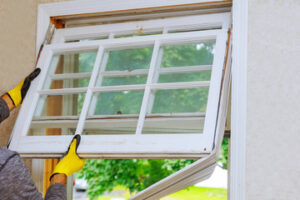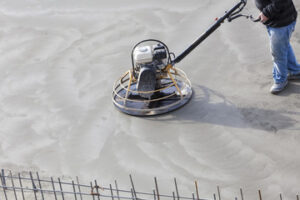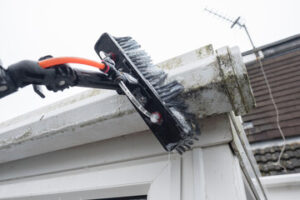A dog bite can cause serious injuries, including permanent scarring. This can lead to a lot of financial burdens, including ongoing medical expenses and emotional trauma.
Atlanta Dog Bite Lawyer can help you recover the compensation you deserve. They can negotiate with insurance companies to ensure you are paid fairly for your damages.

Dog bites and other animal attacks are serious and painful events that can have lifelong effects on the victim. They often lead to expensive medical bills, lost wages, and other expenses not covered by insurance. A qualified and experienced dog bite lawyer can help victims get the financial reimbursement they deserve to cover their costs.
The first thing to look for when selecting a dog bite attorney is experience. A personal injury law firm with a track record of handling dog bite cases will better understand how state laws and precedents apply to these types of claims. This knowledge can be invaluable when negotiating with insurance companies and preparing for trial.
You should also consider how many years the dog bite lawyer has been in practice and whether they have handled similar cases to yours. While you might be tempted to hire an attorney with less experience, you should bear in mind that you’re looking for someone who can provide you with the best chance of a successful outcome and is well worth their fee.
It’s also important to find out what other clients have had to say about the lawyer you are considering. Ask friends and family members who have hired a dog bite lawyer in the past about their experiences, or check online reviews. It’s also a good idea to visit several potential lawyers before hiring one. This will give you a feel for how comfortable and confident you will be working with them.
Another aspect of experience to consider is the level of expertise and professionalism demonstrated by the dog bite lawyer you’re thinking about hiring. A good dog bite attorney will be able to answer any questions you have and be able to explain the legal process in simple terms. They will also be able to address any concerns you have about the cost and duration of your case.
In addition to their experience with dog bite claims, you should also look for a personal injury lawyer who offers free consultations and flexible payment plans. A contingency fee is typical for this type of claim, so make sure you understand the percentage they will charge before deciding to work with them. You should also ask about any hidden fees that might apply to your case, such as court filing fees or the cost of medical records.
Look for a Track Record
Dog bite injuries can be severe and disfiguring. They can lead to infections, scarring, nerve damage, permanent disability, and a host of other issues. It is important that you hire a lawyer with experience handling such cases. They will know how to investigate the incident thoroughly, interview witnesses, gather medical records and consult experts to determine the extent of your injuries. They will also be able to assess the dog owner’s history and behavior and establish negligence if necessary.
Compensation for a dog bite injury can include past and future medical expenses, lost income, pain and suffering, and loss of consortium. A lawyer will be able to help you calculate the value of your claim based on the nature and severity of your injuries. This can be difficult since some factors are subjective. However, an experienced dog bite attorney can provide you with a better understanding of your case and guide you to the right compensation.
It is also important to look for a lawyer that has a good track record handling dog bite injuries and other personal injury cases. Some lawyers post their case results on their websites, while others are more discreet about their success. Either way, you should always ask about their previous experience with dog bite cases before hiring them.
Another important consideration is a lawyer’s availability. You will be working closely with your lawyer throughout the process, and you want to ensure that they are available to answer your questions and address your concerns promptly. Additionally, you will need to communicate with your lawyer frequently, so it is important that they have a flexible schedule and are available by phone or email when needed.
Finally, it is essential to find a dog bite lawyer who is dedicated to your case and will fight hard for you. If you are not happy with a lawyer’s representation or feel like they are not giving your case the attention it deserves, consider switching to another firm. This will help you secure the financial compensation that you deserve.
Look for Reputation
Dogs are man’s best friend, but they can also be a dangerous, unpredictable animal. According to the Centers for Disease Control and Prevention, about 4.5 million people are bitten by dogs every year in the United States. Some of these bites are minor, while others can be more severe. In the most serious cases, victims may experience permanent scarring, disfigurement, nerve damage, traumatic brain injury, or even wrongful death.
In order to obtain the compensation you deserve, it’s important to have an experienced dog bite attorney by your side. An attorney will help you calculate the full extent of your damages, gather evidence, establish liability, and negotiate with insurance companies. If necessary, they can also file a lawsuit on your behalf in court.
Finding the right dog bite lawyer for your case involves taking into consideration their qualifications, reputation, and track record. You should also look for a firm that offers free consultations. During the consultation, you can ask the attorney questions about your case and decide whether they are the right fit for you. If you’re unsure which attorney to choose, ask for references from past clients. These can provide valuable insight into an attorney’s skills and abilities.
Insurance companies often try to minimize their liability by rushing victims into a settlement. A skilled dog bite injury lawyer knows how to handle these tactics and will work tirelessly to get you the compensation you deserve. They will carefully analyze all the evidence and consult with experts, if necessary, to build a strong case on your behalf. They will also handle all communication and negotiations with insurance adjusters, ensuring that you receive a fair settlement for your injuries.
Look for Costs
When hiring a dog bite lawyer it is important to look for costs. A lawsuit is expensive, and there are many hidden expenses. These costs can include filing fees, legal research expenses, witness fees, expert fees and more. These expenses can add up quickly, and it is important to understand what they are before hiring a dog bite lawyer.
Most lawyers work on a contingency fee basis and do not get paid unless they win the case. While this can save victims upfront expenses, it is important to make sure that any contingency fees cover all the necessary expenses for a successful case. It is also important to ask about potential additional expenses that might not be included in the contingency fee, such as costs for medical records and expert witness fees.
An experienced dog bite attorney can help a victim secure the maximum amount of compensation possible for their injuries. This is because an experienced attorney will have the expertise and resources to build a strong case on behalf of the client. Moreover, an experienced dog bite attorney will be able to negotiate with the at fault party’s insurance company and level the playing field. This will ensure that the insurance company does not take advantage of a victim and does not settle for less than what is fair compensation.
When a dog bite attack occurs, the victim is often left with thousands of dollars in medical bills. These bills not only come out of pocket unnecessarily but can also cause significant financial burdens in the future. For example, when a person suffers from a permanent disability, they will likely have to modify their lifestyle and require long-term care. This can result in increased living expenses and a decreased quality of life. An experienced dog bite attorney will understand the full extent of a victim’s injuries and the impact on their lives.
A skilled attorney can also help a victim recover emotional trauma damages as well. This type of compensation addresses the psychological impact of a dog bite injury including anxiety, fear, and Post Traumatic Stress Disorder (PTSD). These damages can be difficult to quantify, and an experienced dog bite attorney will know how to effectively arrange and present the evidence to support a claim.








